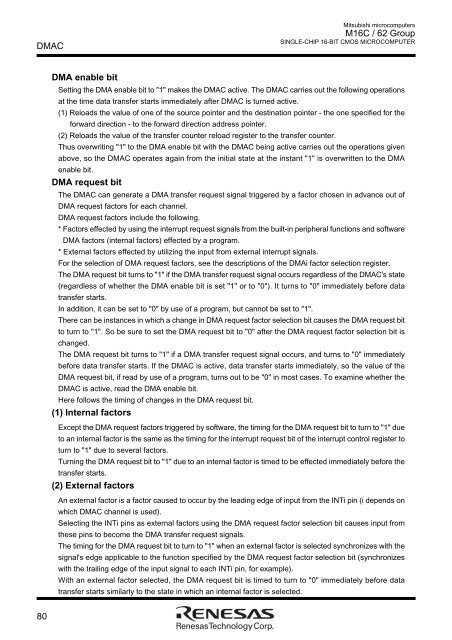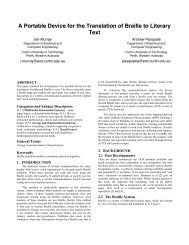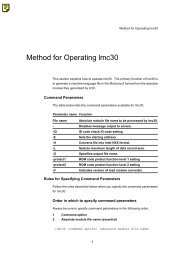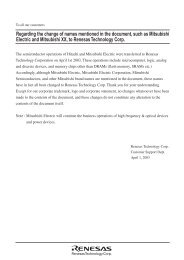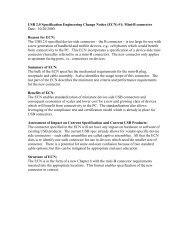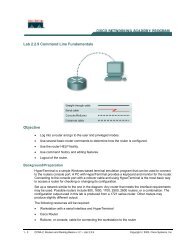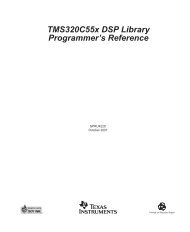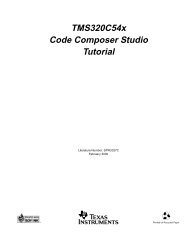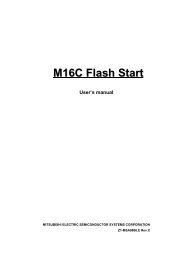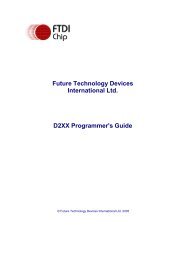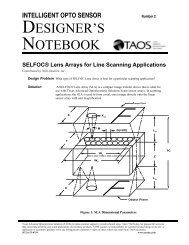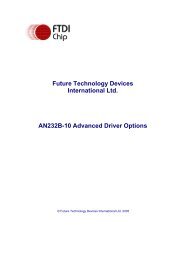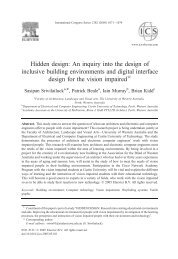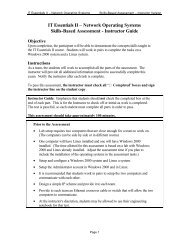You also want an ePaper? Increase the reach of your titles
YUMPU automatically turns print PDFs into web optimized ePapers that Google loves.
DMACMitsubishi microcomputers<strong>M16C</strong> / <strong>62</strong> <strong>Group</strong>SINGLE-CHIP 16-BIT CMOS MICROCOMPUTERDMA enable bitSetting the DMA enable bit to "1" makes the DMAC active. The DMAC carries out the following operationsat the time data transfer starts immediately after DMAC is turned active.(1) Reloads the value of one of the source pointer and the destination pointer - the one specified for theforward direction - to the forward direction address pointer.(2) Reloads the value of the transfer counter reload register to the transfer counter.Thus overwriting "1" to the DMA enable bit with the DMAC being active carries out the operations givenabove, so the DMAC operates again from the initial state at the instant "1" is overwritten to the DMAenable bit.DMA request bitThe DMAC can generate a DMA transfer request signal triggered by a factor chosen in advance out ofDMA request factors for each channel.DMA request factors include the following.* Factors effected by using the interrupt request signals from the built-in peripheral functions and softwareDMA factors (internal factors) effected by a program.* External factors effected by utilizing the input from external interrupt signals.For the selection of DMA request factors, see the descriptions of the DMAi factor selection register.The DMA request bit turns to "1" if the DMA transfer request signal occurs regardless of the DMAC's state(regardless of whether the DMA enable bit is set "1" or to "0"). It turns to "0" immediately before datatransfer starts.In addition, it can be set to "0" by use of a program, but cannot be set to "1".There can be instances in which a change in DMA request factor selection bit causes the DMA request bitto turn to "1". So be sure to set the DMA request bit to "0" after the DMA request factor selection bit ischanged.The DMA request bit turns to "1" if a DMA transfer request signal occurs, and turns to "0" immediatelybefore data transfer starts. If the DMAC is active, data transfer starts immediately, so the value of theDMA request bit, if read by use of a program, turns out to be "0" in most cases. To examine whether theDMAC is active, read the DMA enable bit.Here follows the timing of changes in the DMA request bit.(1) Internal factorsExcept the DMA request factors triggered by software, the timing for the DMA request bit to turn to "1" dueto an internal factor is the same as the timing for the interrupt request bit of the interrupt control register toturn to "1" due to several factors.Turning the DMA request bit to "1" due to an internal factor is timed to be effected immediately before thetransfer starts.(2) External factorsAn external factor is a factor caused to occur by the leading edge of input from the INTi pin (i depends onwhich DMAC channel is used).Selecting the INTi pins as external factors using the DMA request factor selection bit causes input fromthese pins to become the DMA transfer request signals.The timing for the DMA request bit to turn to "1" when an external factor is selected synchronizes with thesignal's edge applicable to the function specified by the DMA request factor selection bit (synchronizeswith the trailing edge of the input signal to each INTi pin, for example).With an external factor selected, the DMA request bit is timed to turn to "0" immediately before datatransfer starts similarly to the state in which an internal factor is selected.80


